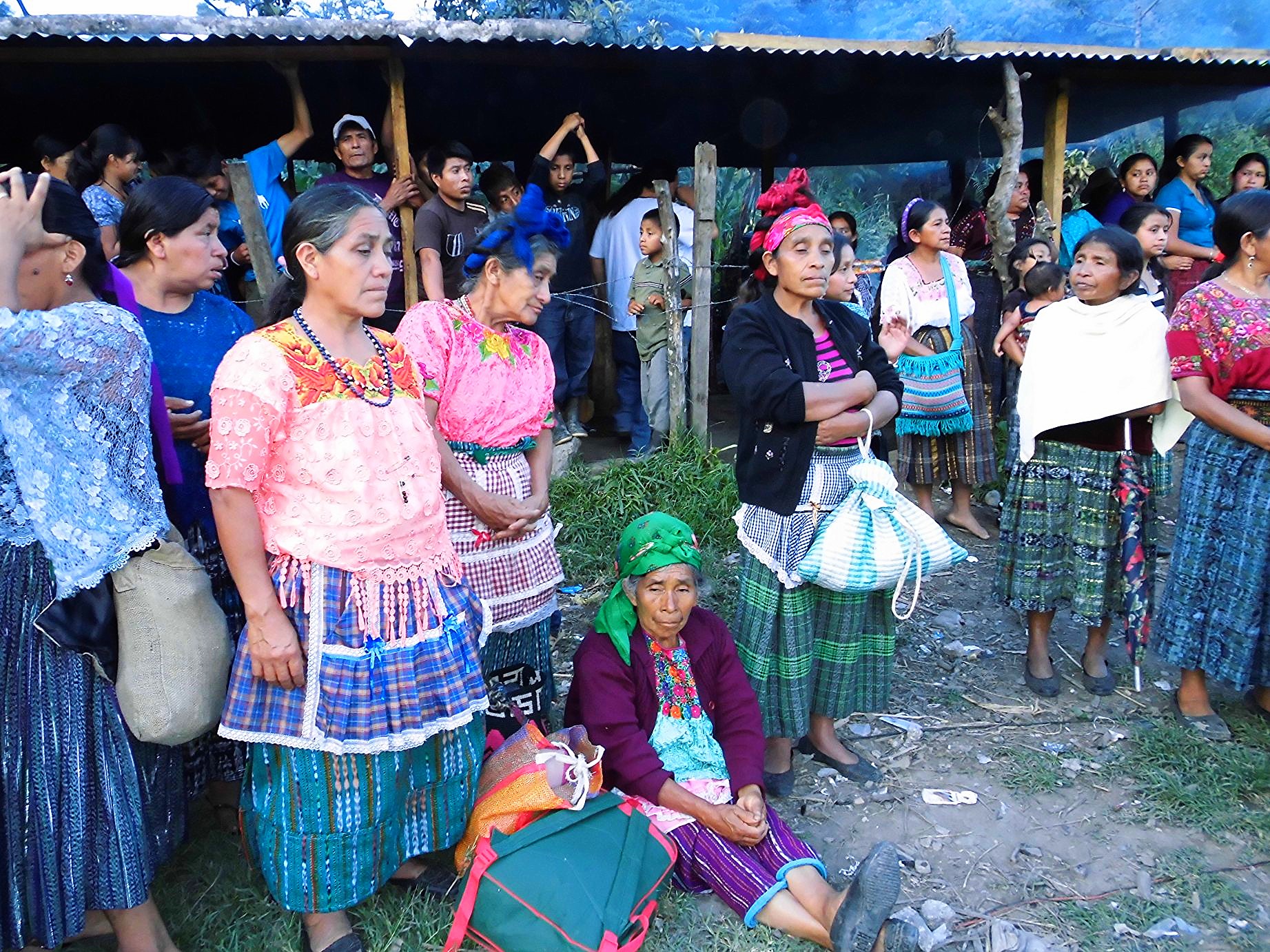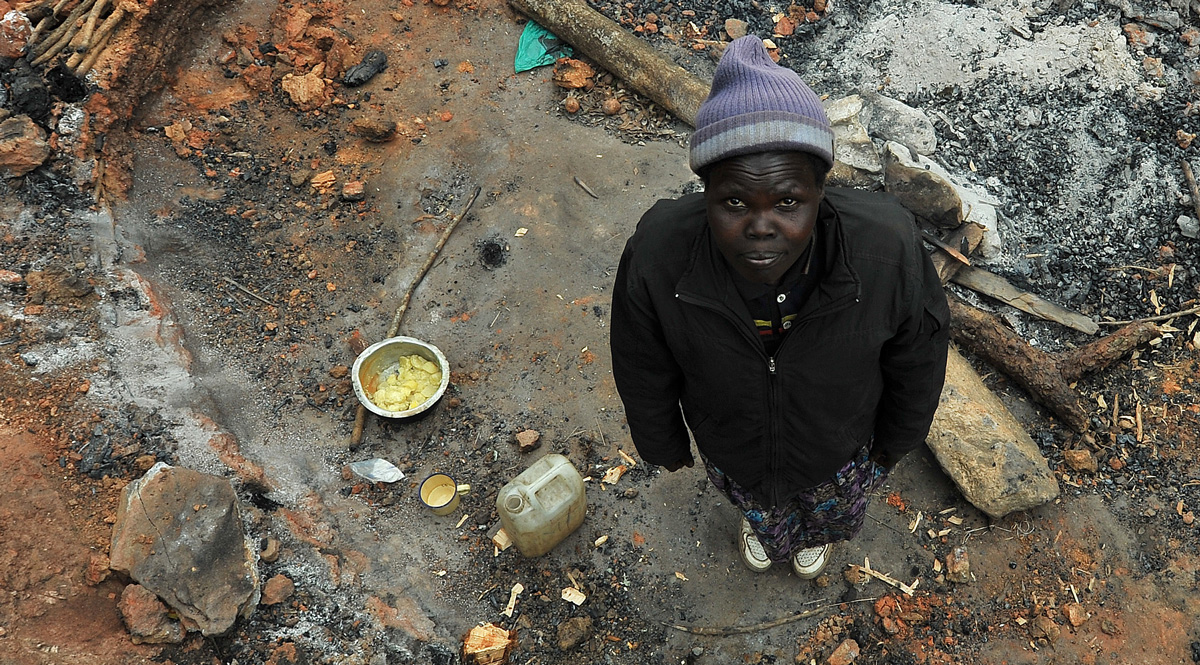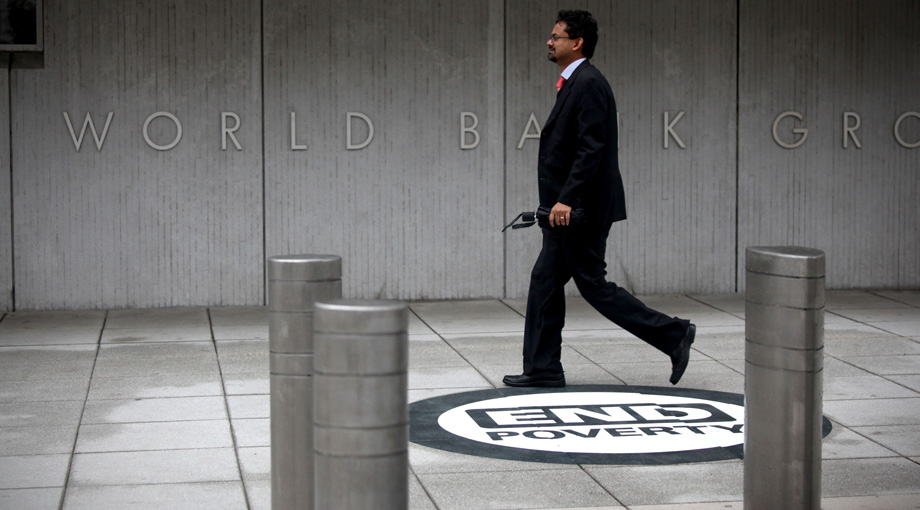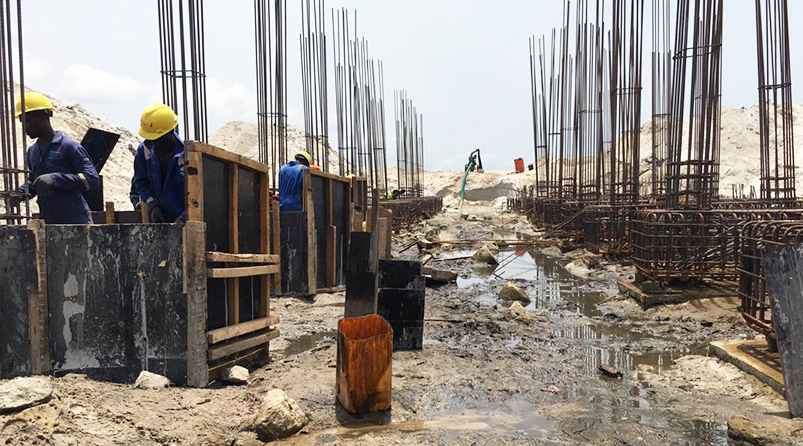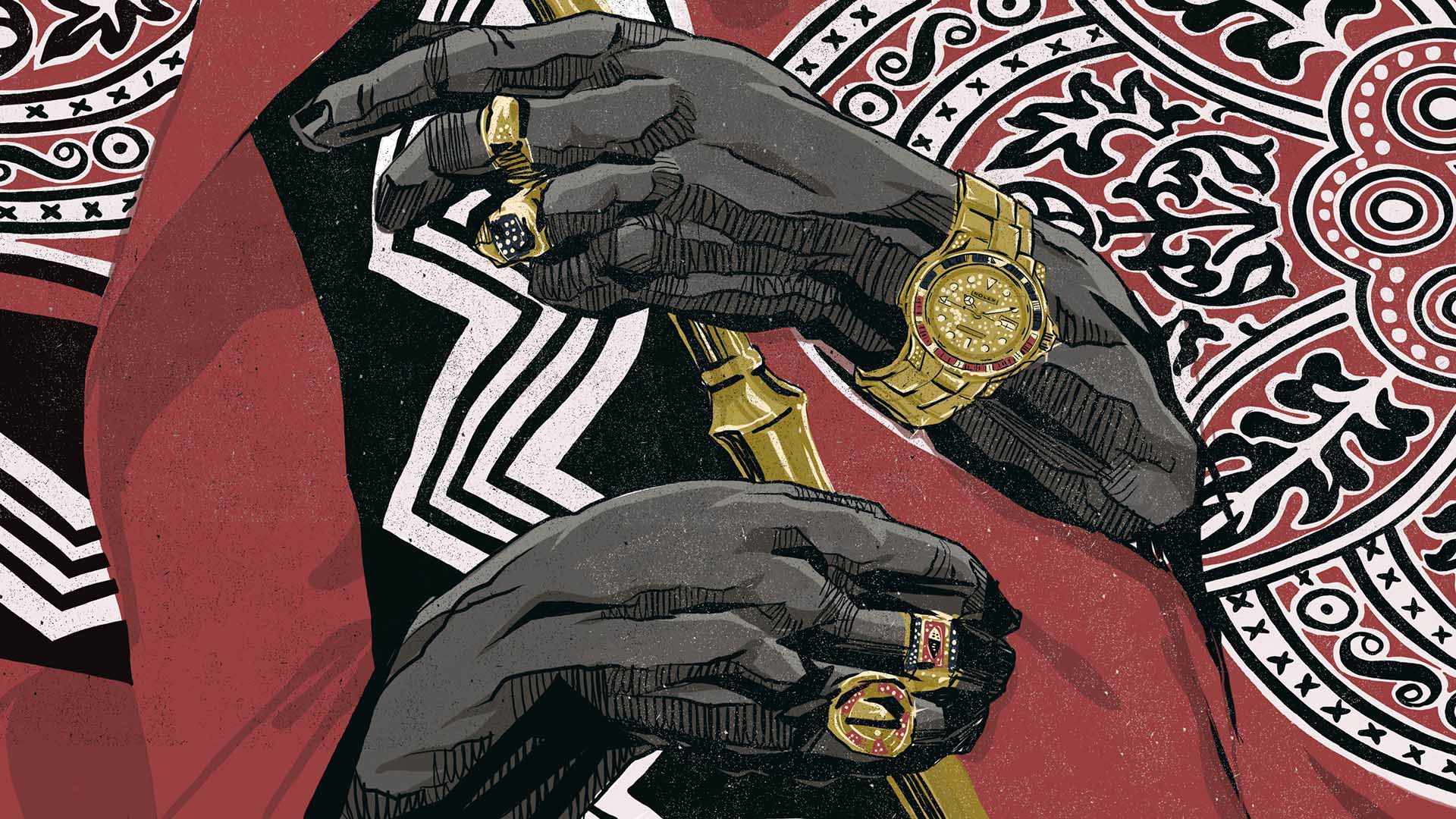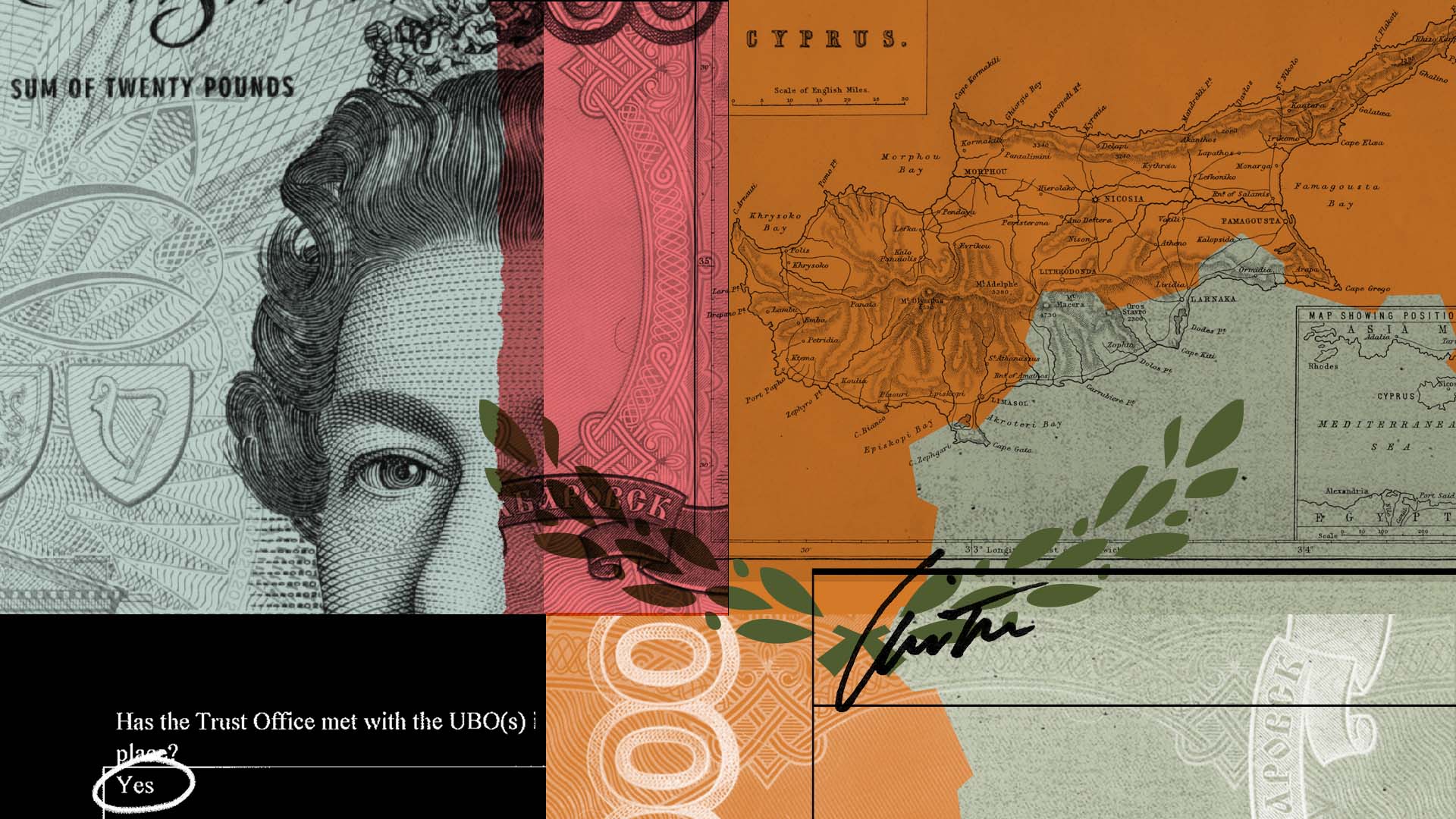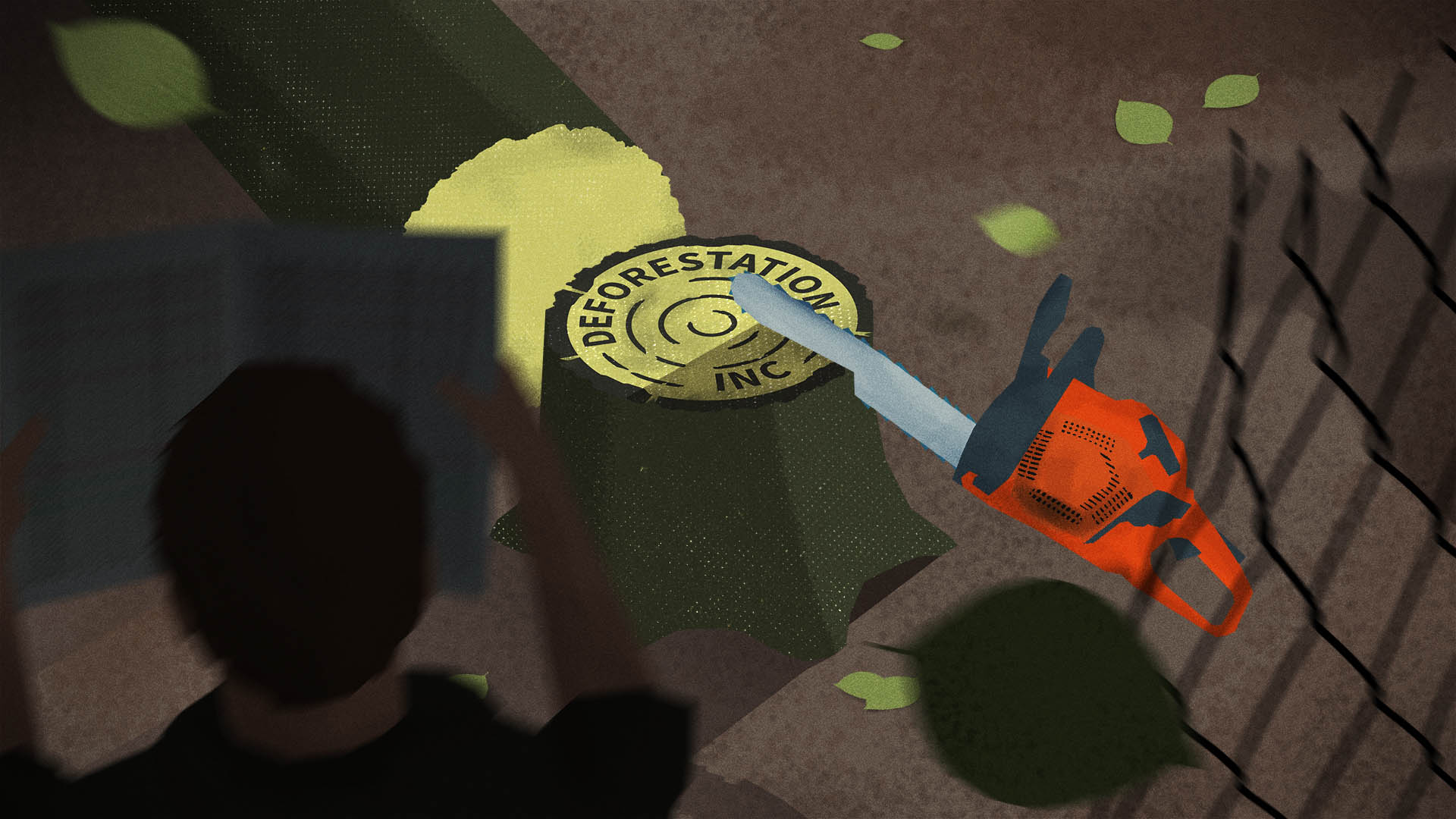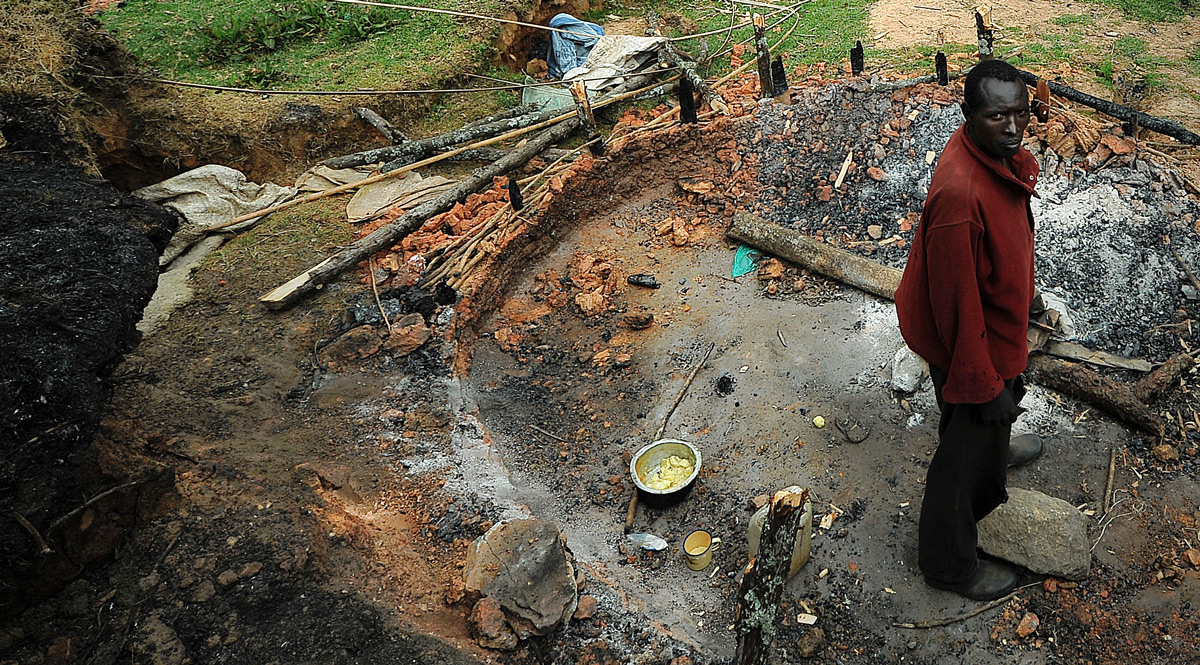
Former World Bank official says bank shut down his efforts to defend rights of tribal group in Kenya
The convoy of vehicles rumbled into western Kenya’s Cherangani Hills, a region of thick forests and bitter land conflicts. Inside the caravan: a delegation of World Bank and Kenyan officials accompanied by armed forest rangers.
The group was investigating allegations that the Kenya Forest Service was using a World Bank-backed conservation project to bankroll a wave of evictions targeting the Sengwer, a hunter-gatherer tribe that says it has lived in these forests for centuries.
Navin Rai, the World Bank’s top advisor at the time on issues relating to indigenous peoples, was among the officials who inspected the charred ruins of mud-and-thatch huts that tribe members said had been burned by forest rangers who considered the Sengwer to be squatters occupying the land illegally.
One night during the July 2009 field visit, a group of Sengwer elders sought out Rai. They knew the bank had a detailed policy that required that its borrowers respect the traditional land rights of indigenous groups, a precept they believed should have prevented the campaign of evictions against the tribe.
Was it true, they asked through a translator, that Rai had written this policy?
Yes, he said.
The elders told him that words on paper were a fine thing, Rai recalls. But now, they said, he needed go back to the World Bank’s headquarters and make sure the bank delivered on the policy’s promise.
Back in Washington, D.C., Rai says, he urged the bank’s management to press Kenya’s government to stop the evictions and work out a deal that would acknowledge the tribal group’s right to use the forest.
At first, Rai says, bank officials seemed open to his plan for resolving the issue.
Then things changed.
A high-level bank official, Rai claims, told him to stop working to help the Sengwer.
“I was told: ‘You are not to act on this anymore,’ ” Rai says.
Instead of following Rai’s proposals, the World Bank rewrote the plan for the forest conservation project, backing away from key language that committed Kenya’s government to help the Sengwer obtain formal titles to the land they had long occupied.
With the new strategy in place, Kenyan authorities continued evicting the Sengwer from the forest. Authorities have burned more than 1,000 Sengwer homes since the conservation program began in 2007, according to Sengwer leaders and human-rights groups.
The Sengwer case marks another chapter in the World Bank’s fraught relationship with indigenous peoples who live on or near land targeted for development.
The bank, formed more than a half century ago by the most powerful nations on the planet to combat poverty, frequently puts the interests of its borrowers ahead of tribes like the Sengwer, an examination by the International Consortium of Investigative Journalists, The Huffington Post, the GroundTruth Project and other media partners has found. The media partnership’s investigation included reporting visits into the Cherangani Hills’ forests, interviews with former World Bank employees and consultants and a review of thousands of pages of bank documents.

Rai, who served as the World Bank’s top indigenous affairs expert from 2000 to 2012, says that, too often, the bank’s management addresses the needs of vulnerable populations in “a cosmetic way” rather than making sure the institution’s own rules for protecting their rights are enforced.
“It’s a facade,” Rai, 64, says.
Indigenous peoples—known in some countries as “aboriginals,” “hill tribes” or “minority nationalities”—are generally characterized by a collective attachment to ancestral lands, along with distinct languages and social institutions that separate them from their country’s dominant population, according to the World Bank. The bank estimates the worldwide population of indigenous peoples totals roughly 300 million.
The World Bank repeatedly declined to answer questions about Rai’s work at the bank and his claims that superiors told him to keep quiet about the Sengwer case. It also declined to answer broader questions about its relationship with indigenous communities.
In public statements, the bank says it works hard to help indigenous groups preserve their rights and improve their lives. Among the examples it cites are an initiative in the Amazon region that led to the “collaborative mapping” of 2,344 indigenous territories and a new grant program for fighting forest loss that puts “project design and funding decisions in the hands of indigenous peoples.”
In the Sengwer case in Kenya, the bank has said in public statements that it’s not to blame for the evictions. It says it “acted swiftly” to deal with problems when they arose. It attributes many of the problems with the project to issues it had no control over, including “tension over historic land issues, longstanding grievances of indigenous communities, and unresolved conflicts between those communities and the Kenya Forest Service.”
Despite rocky circumstances, the bank says, the project “provided many benefits to the communities.”
Others—including the bank’s own internal Inspection Panel—argue that the bank mishandled the case, violating its own principles.
The behind-the-scenes story of the World Bank’s struggles in the Cherangani Hills reveals the frustrations of advocates—both inside and outside the bank—as they’ve tried to push the bank to live up to its commitments to defend indigenous peoples who live in the path of development initiatives.
For Navin Rai, the fight over the Sengwer was one of his last battles at the World Bank.
For many Sengwer, the consequences of the bureaucratic scuffles inside the planet’s preeminent development lender still shadow their lives.
They say their homes—and their way of life—remain at risk.
Up in flames
It was a morning routine: Elias Kimaiyo woke up, went outside his family’s mud-and-thatch home and climbed a hill. His goal: see where Kenya Forest Service officers were heading that day as they trudged into the forest from a nearby ranger station. Like thousands of his fellow tribespeople, he spent many of his days worrying about whether his family would be the next to be evicted by gun-toting rangers.
One morning in late 2011, Kimaiyo saw that KFS officers were heading in another direction. He went home and worked with his wife, Janet, harvesting their small corn crop in a clearing in the forest. In the afternoon, he decided to check again.
This time, when he climbed the hill, he could see a group of rangers heading toward his house.
Kimaiyo ran home. He and his wife began grabbing their things—blankets, utensils, a mattress—and hiding them in the brush. They could see their neighbors’ homes burning. Kimaiyo’s one-year-old son sat in the dirt, crying, as his mom and dad carried armfuls of their belongings deeper into the forest.
Kimaiyo and his wife fled with their son to the other side of a river. They hoped the KFS officers would somehow miss their house in the dense forest.
They didn’t.

Kimaiyo watched, he says, as flames consumed his house and what was left inside—tables, chairs, the bed frame, even the mattress, which the rangers had discovered poorly hidden in the brush and tossed onto the fire.
It was the fourth time, Kimaiyo claims, that Kenya’s government had destroyed his home since the 2007 launch of a forest conservation project that the World Bank said would “improve the livelihoods of communities participating in the co-management of water and forests.” The bank put up $68.5 million to finance the program.
When he first heard of the initiative, Kimaiyo says, it sounded like a good thing. Authorities promised he and other Sengwer would get benefits—cattle, sheep and chickens—if they moved from under the forest canopy into the glades, the natural clearings in the forest. They’d still be able to go into the trees and tend beehives and livestock and gather herbs, plants and fruit, they were told.
The Sengwer are a small group: 33,000 men, women and children, according to a 2009 census, including an estimated 13,500 living in the Cherangani Hills’ Embobut Forest. The Sengwer have long felt abused by Kenya’s government, which has been trying to remove them from the forest for decades.
Kimaiyo and other tribespeople say they were reassured by the World Bank’s involvement in the program. The bank’s Indigenous Peoples Policy is designed to protect groups like the Sengwer. The policy acknowledges that indigenous communities’ identities and cultures are “are inextricably linked to the lands on which they live and the natural resources on which they depend.”
To comply with the policy, Kenyan authorities hired Kai Schmidt-Soltau, a German sociologist and development expert, to prepare a “policy framework” that spelled out how the project would follow the bank’s rules for protecting the Sengwer and other indigenous groups. It promised that the government of Kenya wouldn’t “engage/support in any form evictions of indigenous peoples from forests” and would help them secure formal legal titles to “land they are presently occupying and using.”
The government failed to keep these promises, Sengwer say, and instead targeted them for a series of mass evictions. Kenyan authorities told Sengwer leaders that the framework was “a mere memorandum of understanding” and not a binding agreement, according to a complaint filed by advocates for the Sengwer with the World Bank’s Inspection Panel, which reviews grievances about loans to government projects.
Kimaiyo, 35, has lived with evictions and worry since he was a child, but since the conservation program began, he and other Sengwer claim, the government has grown more aggressive. Sengwer leaders say the program helped escalate the Kenya Forest Service’s efforts to remove people living in the forest by redrawing the borders of the Cherangani Hills’ protected Forest Reserve and by helping the KFS buy guns and vehicles.
Now at night, families burned out of their homes squeeze into makeshift shelters made of wood that provide little protection from the elements. Many Sengwer have abandoned the forest, for fear of being arrested. They can’t harvest the honey from their beehives. They leave wild berries on the bushes. They can’t access tree bark they need to make medicine, and they’ve had to abandon cultural customs such as rites of passage ceremonies.
“Most of the time,” Kimaiyo says, “I just live in fear.”
‘Political space’
The World Bank hired Navin Rai in 1999, and named him the bank’s top advisor on indigenous issues a year later. Rai, a Nepali national and a member of the Rai, an indigenous group based primarily in Nepal and India, was a Fulbright scholar with a doctorate in ecological anthropology from the University of Hawaii. Before coming to the World Bank, he helped the Philippine government write its first law protecting the rights of indigenous groups.
The World Bank needed help. For more than two decades, indigenous groups and their advocates had criticized the bank for ignoring abuses by its borrowers.
In the 1980s, soldiers and paramilitary gangs massacred more than 400 Maya Achi Indians who refused to make way for a World Bank-funded dam on Guatemala’s Chixoy River. Victims were strangled, shot or hacked with machetes. The bank denied knowledge of the killings.
In the 1990s, indigenous groups in Chile, Paraguay, India and other countries charged that the World Bank Group had failed to protect their rights. In northwestern Brazil, for example, activist groups claimed bank management’s stumbles in overseeing a natural resources program allowed “invasions by logging companies and land speculators” that “caused unmeasured harm to isolated indigenous peoples.”
These kinds of problems were a reflection of a longstanding clash of priorities at the bank: the conflict between getting projects done and protecting the people who live nearby. Current and former World Bank insiders say internal pressures to approve and complete projects often undercut efforts to enforce safeguards designed to protect vulnerable populations from negative impacts of development. Social scientists like Rai frequently find themselves fighting losing battles against economists and project managers who dominate the bank’s institutional politics.
“To this day, it’s the same thing,” says Schmidt-Soltau, who has consulted on World Bank projects for more than a decade. “People in the bank are always complaining about the safeguards and how difficult they make it to get projects approved.”
Rai believes there’s another reason indigenous communities have struggled to be heard: many bank staffers are sons and daughters of government ministers and other elites from around the world. Rai says they often see indigenous peoples as standing in the way of dominant groups’ ability to profit from logging, mining and other ventures.
As he took on his new role at the bank, though, Rai thought he had an opening to change things. James Wolfensohn, the World Bank Group’s president from 1995 to 2005, and Ian Johnson, the bank’s vice president for sustainable development, were strong supporters of staffers who were concerned about enforcing safeguards for people on the ground, Rai recalls. This provided him “political space” to fight for policies benefiting indigenous peoples, he says.
Rai used his clout to push for a revision of the bank’s Indigenous Peoples Policy. He believed the policy had a “gaping hole” because it failed to acknowledge indigenous groups’ customary land rights.
“I had a strong belief that things would go right … But in the end they often went wrong.” – Navin Rai
Indigenous peoples generally hold land communally—they don’t live by Western concepts of individual land ownership and formal legal titles issued by governments. Without recognition of their customary rights, they’re at risk of being pushed off the lands where they live and gather food and medicines.
Powerful officials within the bank opposed adding recognition of customary land rights to the policy. Many of the bank’s lawyers, for example, argued that requiring governments that borrow from the bank to respect customary land rights would constitute an interference in their domestic political affairs.
In 2004, amid the debate over the proposed policy’s reach, Rai’s mother became ill, and he returned home to Nepal to be with her. One day he checked his email and discovered, he says, that a new version had been crafted in his absence. Protections for customary land rights had been stripped out, he says, and a watered-down policy was poised to go to the bank’s board of directors for approval.
Rai flew back to Washington, he says, and told bank officials that if customary land rights were excluded, he would refuse to support the policy. The bank could either pass a version with strong land rights protections or fire him.
The provision was put back into the draft and the bank’s governing board approved the new policy in May 2005. It requires borrowers to “explore alternative project designs to avoid physical relocation” of indigenous communities. In “exceptional circumstances” when avoiding resettlement is impossible, the policy says, the bank’s borrowers must obtain wide support from affected communities for any relocation plan.
The fight over the policy lasted more than four years. Johnson, the former VP for sustainable development, recalls that the process became something of a “war of attrition,” with Rai and his allies outlasting those who objected to efforts to include cutting-edge protections for indigenous groups.
“He stuck with it and made a difference,” Johnson says. “He’s a man of immense integrity and commitment and doggedness.”
Rai hoped the victory would translate into better practices that would reduce conflicts between indigenous communities and the bank.
The years ahead would test that expectation.
“I had a strong belief that things would go right,” he says. “But in the end they often went wrong.”

‘Wanton destruction’
One day last fall, Elias Kimaiyo pointed to a tree that was missing bark on one side. “You see that this man has left the bark on the other side of the tree. That way it won’t die. You see, we know how to take a little bark to build our beehives without killing the tree.”
Sengwer enforce laws of conservation upon themselves, leaders say: if you are found “ringing” the whole tree—stripping it completely of bark—you will be punished.
The United Nations and the World Bank acknowledge that indigenous peoples are usually better guardians of the environment than other populations. One World Bank biodiversity study reported that “territories of indigenous groups who have been given the rights to their lands have been better conserved than the adjacent lands.”
Kenyan authorities see things differently. They say the only way to protect the forest from erosion, tree-cutting and overgrazing is to force Kimaiyo and other Sengwer to leave. They blame the Sengwer for “wanton destruction of public forests.”
For Kimaiyo, the worst part of the push against the Sengwer is being separated from his family.
His wife left to attend school in the hopes of finding a job that could support them, and he sent his children—now 3 and 5—to live with relatives. He didn’t want to expose them to the dangers that lurk in the forest.
“If KFS chased me,” he says, “I would not be able to run with them.”
Kimaiyo stays in the forest with his cousin, tending his cows and sleeping in makeshift huts that are easier to replace if they’re destroyed. So far he’s avoided capture, but dozens of other Sengwer have been arrested by KFS guards and charged with trespassing or illegal farming, according to Sengwer leaders and media reports.
“I’ve seen many people arrested, even an old man of 90 years,” Kimaiyo says. When he visited the man in jail, he found him in handcuffs, sleeping on cold cement. “I had to convince the guard to take off the handcuffs because he was very old. I asked: ‘Why don’t you let me in the cell and let him go?’ They said that was not allowed.”
The fight over the forest has turned Kimaiyo into an activist. He works to educate other Sengwer about their rights and let the World Bank and others know about his tribe’s struggle.
‘Time to leave’
In June 2005, Paul Wolfowitz, best known as an architect of the U.S. invasion of Iraq, replaced James Wolfensohn as the World Bank’s president. Under the former defense official, former bank insiders say, the institutional clout of staffers responsible for standing up for the rights of marginalized populations eroded.
In this new environment, making sure borrowers and bank employees followed the new Indigenous Peoples Policy became a tougher challenge for Navin Rai and other social protection staffers at the bank.
One early test came in Papua New Guinea, where the bank was funding a program that was supposed to improve roads and planting techniques to help small-time palm oil growers earn more money. The bank’s Inspection Panel found that the project’s planners had violated multiple provisions of the Indigenous Peoples Policy—failing, for example, to provide information in indigenous languages and dramatically changing the project’s focus without consulting tribal groups.
In other projects, Rai says, the bank’s safeguards specialists made sure that there were strong plans in place for ensuring that the policy’s requirements were followed, but government officials and bank staffers on the ground ignored these plans.
Starting in 2009, Rai led a team of consultants in writing an evaluation of how well the Indigenous Peoples Policy was being enforced. The team concluded that bank projects frequently showed “weak compliance” with the policy’s protections for customary land rights. Just eight of 34 projects—less than 25 percent—addressed this issue adequately, the evaluation found.
The report was ready for release by 2010, Rai says. Instead, advocates for indigenous peoples say, bank officials tried to bury it.
Chad Dobson, executive director of the Bank Information Center, a human rights group that monitors the World Bank, says Rai’s report wasn’t made public until his group pressed the U.S. executive director for the bank to demand why it was being kept under wraps.
The document that was released August 2011, was different, though, from what Rai and his team had originally written. Bank officials tried to “sanitize” the report, Rai says, editing in obtuse language in an effort to blunt criticism of the bank. Rai says he had to accept a diluted version because “it was either this or nothing.”
As Rai was tussling over the report, he also faced resistance to his efforts to help the Sengwer in western Kenya.
After he pushed for a three-way summit including the bank, the government and the Sengwer, Rai says, a senior official from the bank told him to stop working on the case. The official offered no explanation why, he says.
With Rai out of the picture, the World Bank put together a plan for restructuring the conservation project. Bank management argued that the project’s design had been “overly ambitious” and may have raised “unrealistic expectations” among the Sengwer by promising to help secure official land titles for families living in the forests.
The new plan approved by the bank’s governing board in 2011 withdrew the commitment—written into the planning framework prepared by Schmidt-Soltau, the consultant—that the project would prepare land surveys, arrange registration of land titles and take other steps to help formalize the rights of the Sengwer and other tribal groups to live in and use the forest.
Schmidt-Soltau says the bank used “administrative tricks” to “limit its exposure”: it couldn’t enforce its own rules, so it changed the rules.
Rai, stunned by the outcome, found himself increasingly isolated within the bank.
The departures of Wolfensohn and of Johnson—who left the bank in 2006 after eight years as its sustainable development VP—deprived Rai of two key institutional allies. And through the Kenya case and other battles, he had become a controversial figure inside the bank, a difficult path at an institution that’s not known for encouraging mavericks.
A recent internal survey obtained by ICIJ and HuffPost found that just 26 percent of World Bank Group employees believed that the bank’s leadership “creates a culture of openness and trust.” Only 41 percent said they could report unethical conduct without fear of reprisal.
Joan Carling of Asia Indigenous Peoples Pact, a Thailand-based group, believes bank officials grew disenchanted with Rai as he raised tough questions about the bank’s practices.
It became clear to her during a 2012 conference in Panama how far he’d fallen from favor.
“They were just completely ignoring him,” she says. “It was so revealing to me how marginalized he was inside the bank.”
Under staff rules, Rai says, he could have stayed another year or so, waiting until his mandatory retirement at age 62. Instead, he negotiated an early departure agreement and left the bank in August 2012.
“When you see many things are going around which you do not agree with and which you have no way to influence, it’s time to leave,” he says.

‘Unfinished business’
The World Bank’s funding for the conservation project in Kenya ended, as planned, in June 2013. But controversy over the project didn’t end.
In May 2014, the World Bank’s Inspection Panel issued a report concluding that the bank had violated the “spirit and letter” of its Indigenous Peoples Policy by reshaping the project without giving the Sengwer a say. Government and bank officials let the Sengwer know about the restructuring only after “all decisions had already been taken,” the panel said.
The report said the bank wasn’t directly to blame for the evictions, but added that “correct application” of the bank’s safeguards might have prevented the harms that the Sengwer suffered.
World Bank President Jim Yong Kim said he welcomed “the Inspection Panel’s conclusions that the World Bank is not linked to the evictions.” Kim added, though, that there was “more to be done.” He promised to reach out to Kenya’s leaders to arrange a “colloquium” with the Sengwer that would resolve “this long unfinished business of land rights in Kenya.”
The colloquium was set for March 2015.
A week before it began, Kimaiyo and Paul Kibet, secretary of the Sengwer Council of Elders, signed a statement saying that over the past few days KFS guards had burned more than 30 houses belonging to Sengwer families living in a forest glade.
The statement pleaded:
STOP EVICTIONS of SENGWER FAMILIES NOW IF NOT CANCEL THE INTERNATIONAL COLLOQUIUM CONFERENCE UNTIL WE ARE TREATED AS HUMAN BEINGS.
Kimaiyo thought about boycotting the event but decided to go. He left feeling angry.
“It was all a cover-up,” he says. “They did not listen to us. We had hoped to talk about the abuses we had faced due to their violation of the safeguards but even as the colloquium continued KFS were burning houses in the forest.”
The World Bank had a more positive take, highlighting attendees who praised the event’s “collaborative spirit.” As for reports of a new wave of burnings, the bank said the government arranged a “site visit” for community leaders, media and development officials who “came back with differing interpretations of whether anything had occurred.”
All this comes as the bank is working to update the Indigenous Peoples Policy that Rai helped win approval for in 2005. The bank says the revision will help ensure “the development process fosters full respect for the human rights, dignity, aspirations, identity, culture, and natural resource-based livelihoods of Indigenous Peoples.”
Whatever new policy emerges, many indigenous leaders worry little will change if the bank doesn’t commit to making sure the policy is followed in the real world.
Since 2012, at least six indigenous groups in Asia, Latin America and Africa have accused the World Bank of failing to protect their rights.
In Kenya, just south of the Cherangani Hills home of the Sengwer, members of another indigenous tribe—the Maasai—charged that a geothermal electricity project backed by the bank had forced families to move far from “their former and familiar sources of income”and endure the “loneliness” of the “western way of life.”
On Oct. 22, the bank’s Inspection Panel released an investigative report that found that the bank had violated its rules by failing to recognize the Maasai as indigenous peoples and by allowing villagers to be resettled onto “very poor” land where they suffered food shortages and other hardships. The communities’ most vulnerable members—including widows and children—were left poorer after the relocation, the report said.
Navin Rai now splits his time between Nepal and the United States. He frequently does training sessions for indigenous groups on how the World Bank and other development lenders work.
His experiences with the Sengwer case and other projects have shaken his faith in the institution he gave more than a decade of his life.
“I cannot believe that this is the bank where I once worked,” Rai says. “You can see how far away things have come.”
Elias Kimaiyo plans to keep fighting in whatever way he can.
Often Kimaiyo slips from the shelter of the forest, toting an old Lenovo laptop computer donated to him by a visiting activist from the U.K. He climbs a hilltop and finds an internet connection. He searches for information about the World Bank and the plight of indigenous groups across the world. He shares articles and adds comments about his tribe’s traditions and struggles.
He wrote on Facebook a few months ago: “Say whatever you want to say but Sengwer are demanding freedom.”
